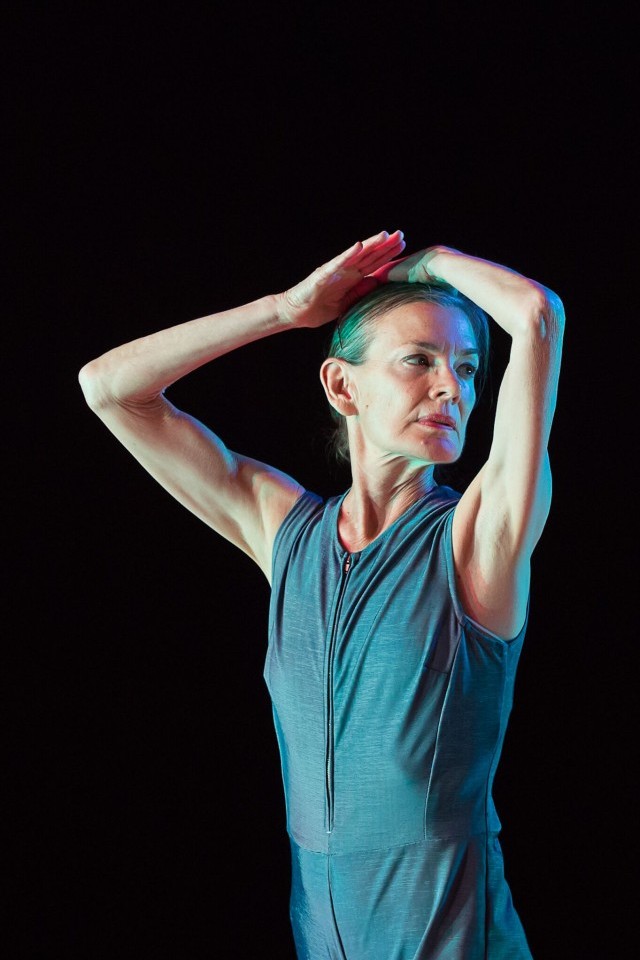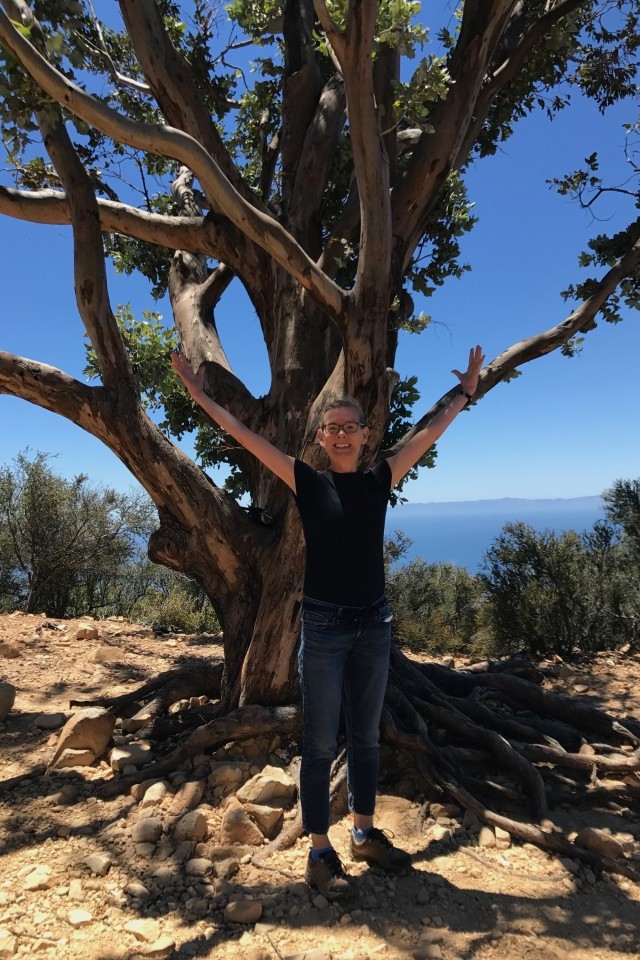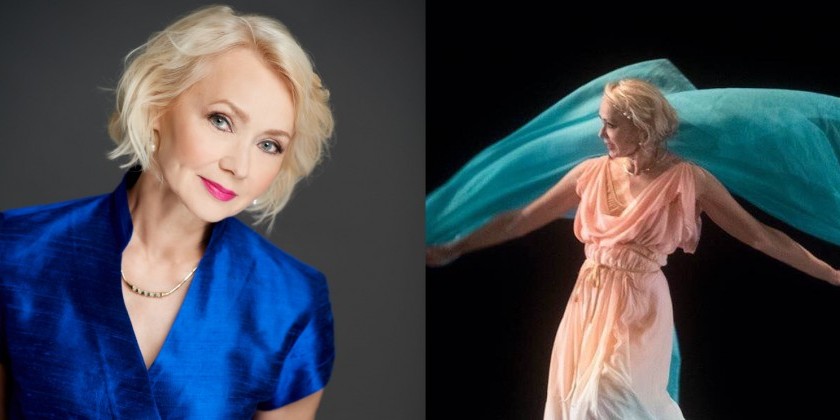MOVING PEOPLE: Molissa Fenley on Contributing to World Peace, Wanting to Pick Haruki Murakami's Brain, and Finding Inspiration in Walking


Molissa Fenley
Biography
Molissa Fenley founded Molissa Fenley and Company in 1977 and has since created over 85 dance works during her continuing career. She grew up in Ibadan, Nigeria, traveling there with her family in 1961, completing all of her early education there in International Schools and her last two years of high school in Spain. She returned to the US in 1971 to study dance at Mills College in Oakland, California. Upon graduation in 1975, she moved to New York. With her company, Molissa Fenley and Company, and as a soloist working in collaboration with visual artists and composers, she has performed throughout the United States, Canada, South America, Europe, Australia, India, Indonesia, Japan, Korea, Singapore, Taiwan and Hong Kong. Her work has been commissioned by the American Dance Festival, the Brooklyn Academy of Music’s Next Wave Festival, the Dia Art Foundation, Jacob’s Pillow, the Joyce Theater, Lincoln Center, the New National Theater of Tokyo, The National Institute of Performing Arts in Seoul, The Kitchen, and Dance Theater Workshop/New York Live Arts. Both Cenotaph and State of Darkness were awarded a Bessie for Choreography in 1985 and 1988 respectively. Molissa has also set many works on ballet and contemporary dance companies, most recently for the Oakland Ballet (Redwood Park), Pacific Northwest Ballet, (State of Darkness), Repertory Dance Theatre (Energizer), Barnard/Columbia (Amdo), Robert Moses' Kin (The Vessel Stories), and the Seattle Dance Project (Planes in Air). She is a Guggenheim Fellow, a Fellow of the American Academy in Rome, has enjoyed residencies at Yaddo, the Bogliasco Foundation, the Baryshnikov Art Center, Djerassi and is a twice recipient of awards from the Asian Cultural Council to visit Japan. Molissa is Professor of Dance at Mills College, in residence in the spring semesters, and often teaches choreographic and repertory workshops at other universities, most recently at Bennington, Barnard/Columbia and Hunter. Seagull Press/University of Chicago recently published Rhythm Field: The Dance of Molissa Fenley.
For historical biography, please go HERE.
Cover shot: Julie Lemberger
Left portrait: Mali Botticelli
Right portrait: Roy Fowler
My earliest memory of dancing is _____________.
in a tap performance that my tap class was presenting; we are in Ithaca, New York, and I must have been around 5 because at 6 we were moved to Ibadan, Nigeria, as my dad started working with the USAID program there. I remember very well that they had a hard time getting me off the stage at the end; after the bow I stayed on rather than exit with everyone else. I think I was just stuck in space and couldn't move. The teacher had to come back onstage and escort me off.
I knew I had to be a dancer when ___________.
every afternoon I made up dances and "taught" them to my dog Shadow. Shadow was a Rhodesian Ridgeback, and very loveable, and liked to prance around with me in the living room.
The most expressive part of the body is ___________.
my torso. I like the musculature of the torso, both front and back, it looks and feels fascinating and complex.
I start my creative process by ___________.
warming up. Everyday just starting with pliés and back stretches. It's always with pleasure that I start; it's a feeling of being at home. I like to listen to Terry Gross on Fresh Air while warming up. She is a constant surprise, so astute, and her guests and interests run the gamut of our contemporary lives.
My motto is ___________.
everytime I'm about to begin a performance, I say to myself, "This is my contribution to world peace." Then I ask the Dalai Lama to protect me. I'm not a practicing Buddhist as such, but feel that calling upon the Dalai Lama for help and guidance is calling upon the utopian idea of world peace.
After choreographing 85-plus pieces, I still find inspiration in ___________.
walking in to the studio, or actually really just walking anywhere — I'm an avid walker and enjoy the feeling of the air on my face and the rhythm of my step. Looking around, whether it's on the New York City street or on a country road, there's so much to see and my mind gets to wander from seeing what's in front of me. It seems to take me into a place of understanding and creativity.
I can’t live without ___________.
my husband Roy. His understanding of the land and the ocean is very valuable to me. I so admire and rely upon his demeanor of combined gentleness and strength.
A personal challenge I face ___________.
changes from day to day. Often it is not very specific and seems to come and go with my state of mind.
If I could pick one person’s brain, it would be ___________ because ___________.
his writing appears to exist outside of tenses — the past, present and future are always intertwined. I bet there's a lot to learn about that kind of overall/over-time thinking.
___________ is overrated.
I'm not sure what might be overrated; that seems like a marketing idea to me, and what is interesting is always changing so perhaps it's the thing that was the last interesting thing that isn't anymore?
Recreating my iconic piece, "State of Darkness" set to Stravinsky’s "Rite of Spring," for seven soloists at The Joyce Theater in the midst of 2020 was ___________.
fulfilling, beautiful, and eye-opening — the seven dancers: Jared Brown, Lloyd Knight, Sara Mearns, Shamel Pitts, Annique Roberts, Cassie Trenary, Michael Trusnovec, our rehearsal director Becky Chaleff, our producer Ross LeClair, and me, we became a family, a sanctuary for each other. A bond was created that will last for many, many years.
My favorite time of day is ___________.
the morning. I love to lie in bed and read the front page of the NYTimes on my phone. Then maybe doze a little more and then get up and have coffee.
If I could invite one person to see a performance by Molissa Fenley and Company, it would be ___________ because ___________.
my imagination of his artistry and his physical presence have been inspiring throughout my life.
Something most people don’t know about growing up in Nigeria in the ‘60s is ___________.
the Biafran War. This was a civil war where the Eastern section of Nigeria (the state of Biafra, the Igbo people) wanted to secede from the rest of the nation. "Within a year, the Federal Government troops surrounded Biafra, capturing coastal oil facilities and the city of Port Harcourt. The blockade imposed led to mass starvation. During the two and half years of the war, there were about 100,000 overall military casualties, while between 500,000 and 2 million Biafran civilians died of starvation". (from Wikipedia)
I would like to learn to ___________.
speak Chinese. I've lived in lower Manhattan for almost 50 years and would like to converse with my neighbors in their language.
One piece of advice I’d give to new choreographers is ___________.
to trust yourself. No one is going to believe in you at first, so you have to.
If I could revisit one dance moment in my life, it would be ___________.
the premiere performance of Bardo at the memorial for Keith Haring at St. John the Divine in 1990.
A piece of music I’ve always wanted to choreograph to is ___________ because ___________.
the Theme with Four Variations by Paul Hindemith commissioned by Balanchine
it's such a moving score, and I love the ballet The Four Temperaments.
When travel restrictions loosen, I’m booking a ticket to ___________.
New Zealand, the country of Jacinda Ardern.
I am looking forward to ___________in 2021.
experiencing vast nature
MOVING PEOPLE: Celebrating People Who Power The Dance World!
Do you know of a MOVING PERSON we should celebrate on The Dance Enthusiast?
Contact us at info@dance-enthusiast.com
Please take a look at our 10th and 11th Year — People Who Power The Dance World — The Dance Enthusiast A to Z










